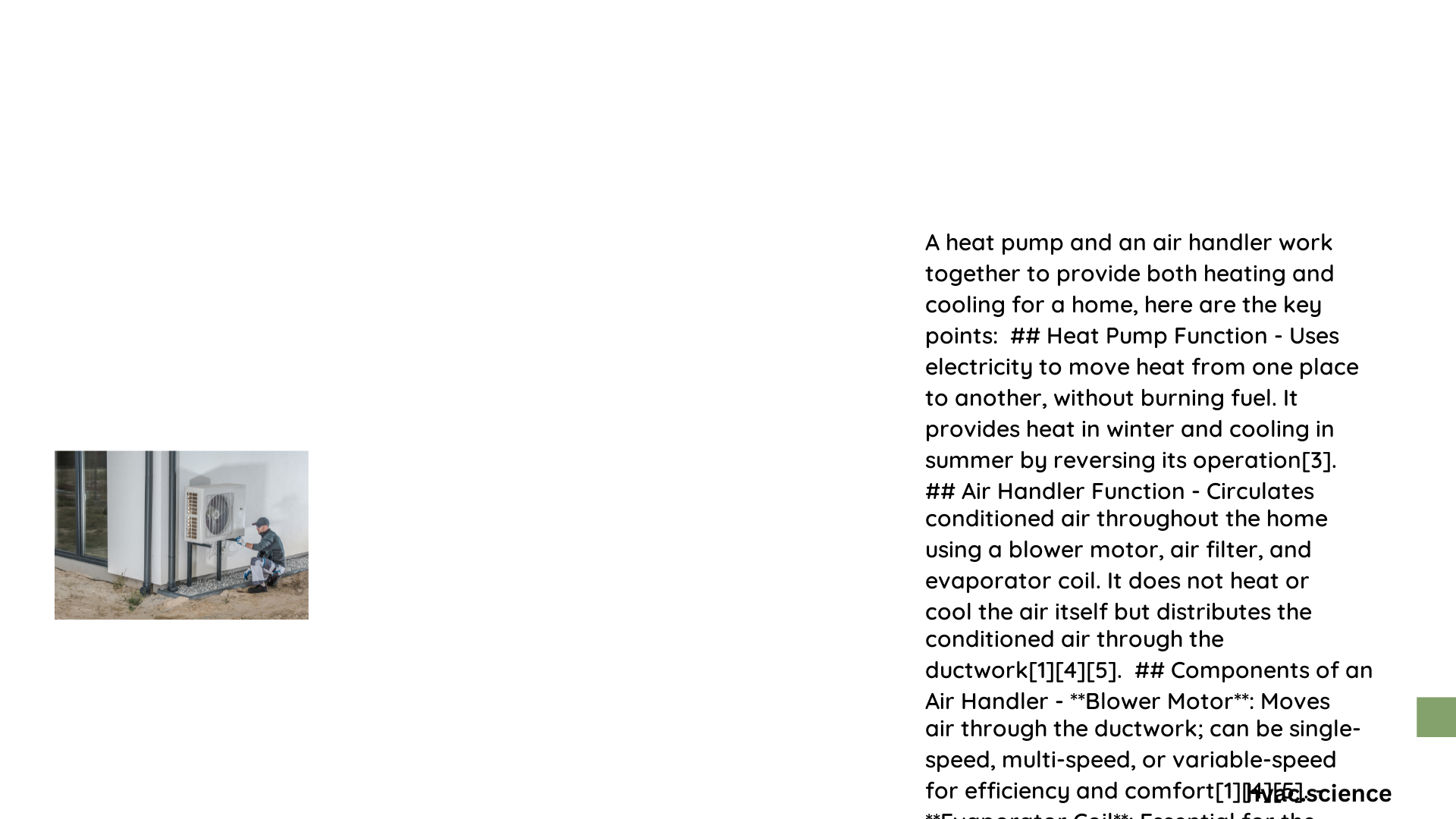Heat pumps and air handlers represent sophisticated climate control technologies that transfer thermal energy between indoor and outdoor environments, enabling efficient heating and cooling. These interconnected systems work seamlessly to maintain comfortable temperatures while minimizing energy consumption, utilizing advanced mechanisms to extract or distribute heat through residential and commercial spaces.
What Makes Heat Pumps and Air Handlers Essential for Home Comfort?
How Do Heat Pumps Operate?
Heat pumps function as versatile climate control systems that can both heat and cool spaces by transferring thermal energy. Unlike traditional heating systems, they move heat rather than generate it, making them significantly more energy-efficient.
Key Heat Pump Mechanisms
- Refrigerant Circulation: Transfers heat between indoor and outdoor environments
- Reversing Valve: Enables switching between heating and cooling modes
- Compressor: Drives refrigerant movement and temperature transformation
What Are the Efficiency Ratings to Consider?
SEER (Seasonal Energy Efficiency Ratio)
| SEER Rating | Efficiency Level | Energy Performance |
|---|---|---|
| 14-15 | Standard | Meets minimum requirements |
| 16-20 | High Efficiency | Excellent energy savings |
| 21+ | Premium | Top-tier performance |
The SEER rating measures cooling efficiency, with higher numbers indicating better energy performance. As of 2023, the minimum SEER2 rating for split-system heat pumps is 14.
HSPF (Heating Seasonal Performance Factor)
- Measures heating efficiency during winter months
- Minimum HSPF2 rating: 7.5 for split-system heat pumps
- Higher HSPF ratings indicate more efficient heating capabilities
How to Ensure Proper Air Handler Compatibility?
Critical Compatibility Factors
- Matching Coil Components
- Appropriate Airflow Rates (CFM)
- Compatible Static Pressure Ratings
- Electrical System Integration
What Are Installation Cost Considerations?
Cost Breakdown
- Unit Size (Tonnage): Determines base equipment expense
- Labor Rates: Vary by region and installation complexity
- Additional Modifications: Potential ductwork or electrical upgrades
Estimated Cost Range:
– 2-ton heat pump: $2,000 – $4,000
– 5-ton heat pump: $4,000 – $7,000
– Air handler integration: $1,000 – $3,000
How to Maintain Your Heat Pump and Air Handler?
Essential Maintenance Practices
- Regular Filter Replacement: Every 1-3 months
- Annual Coil Cleaning
- Electrical Connection Inspection
- Refrigerant Level Verification
Pro Tips for Optimal Performance
- Schedule professional maintenance annually
- Monitor system performance regularly
- Invest in high-efficiency models
- Consider local climate when selecting equipment
Conclusion

Understanding heat pumps and air handlers empowers homeowners to make informed decisions about their home comfort systems. By focusing on efficiency, compatibility, and proper maintenance, you can achieve optimal temperature control while minimizing energy expenses.
